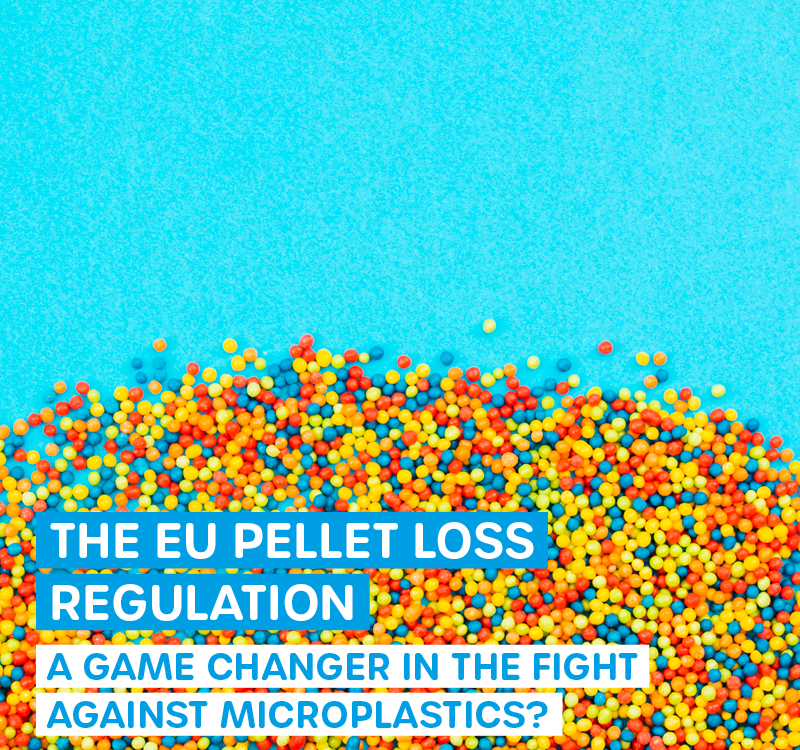
That was the OPEN HOUSE 2025
16. July 2025
Microplastics and Leachables
20. July 2025Microplastics - The quantification of uncertainty or the question: How can we manage crises and risks with a view to a clean future?
The microplastics problem has become one of the most pressing environmental challenges of our time. While tiny plastic particles have long been detectable in all areas of the environment - from the oceans to our food - politicians are struggling to find effective solution strategies. The central question is: how can we minimize the risks to people and the environment while at the same time overcoming the enormous technical and financial challenges?
The revised EU Urban Wastewater Treatment Directive as a turning point
A decisive step was taken in April 2024: The European Parliament adopted the amended EU Urban Wastewater Treatment Directive by a clear majority. The revised directive marks a paradigm shift in dealing with micropollutants and presents municipal wastewater treatment plants with completely new requirements.
In the future, wastewater treatment plants in municipalities with more than 150,000 inhabitants will have to be retrofitted with a fourth treatment stage to remove micropollutants. This measure is aimed at 13 micropollutants; microplastics and and other problematic substances such as pharmaceutical residues and multi-resistant pathogens are not addressed.
The scale of this task is considerable: to date, most wastewater treatment plants in Germany have not been able to filter sufficient quantities of microplastics or micropollutants such as pharmaceutical residues from wastewater, or the problem has merely been shifted. Retrofitting will require billions in investment and drive technical innovation.
Monitoring and analytics: The weaknesses of the system or quantifying uncertainty in microplastics
The revised directive states that microplastic monitoring needs to be conducted twice per year for treatment plants serving more than 150,000 population equivalents. And while technical solutions are progressing (keyword 4th purification stage plus), a critical problem with monitoring is becoming apparent. The quantification of uncertainty in microplastics studies reveals serious methodological deficits. Inconsistent measurement methods, inadequate sample sizes and a lack of standardization lead to enormous fluctuations in the results. While some studies report alarmingly high concentrations, others show minimal values - without transparent uncertainty analyses, risk assessments remain speculative and political decisions unfounded.
In our long-term studies on microplastic discharges via municipal wastewater, we found that the minimum interval for microplastic sampling to record annual emissions should be two to four samples per month – significantly more than twice per year. To capture both seasonal and monthly fluctuations, a higher number of samples is required. This information is available to the EU. Nevertheless, there have been no adjustments to the EU Urban Wastewater Treatment Directive to date.
The Federal Office for Risk Assessment also believes that the current EU requirements for monitoring are not sufficient to obtain a complete picture of microplastic pollution. This is particularly problematic as an effective risk assessment must be based on reliable data. To ensure that the microplastic elimination process within wastewater treatment can take place continuously, we are focusing on the development of a simple detection method for microplastics. These microplastics analytics has already been in use for many years in long-term monitoring and is efficient and cost-effective and can be quickly transferred to all corners of the world.
Political controversies and financing issues
The implementation of the new directive is accompanied by considerable political tensions. A central point of contention concerns the distribution of costs: pharmaceutical manufacturers have been identified as the source of micropollutants and are expected to bear the majority of the costs for retrofitting wastewater treatment plants. An expert opinion claims that the EU Commission used incorrect data as a basis for the legislative process and is supposedly wrongly asking the pharmaceutical industry to pay as the main polluter.
This controversy illustrates the complexity of risk management: who is responsible for a problem caused by multiple sources? The discussion about the scientific basis also shows how important a solid data basis is for political decisions.
Public awareness and pressure to act
Public awareness of the topic is considerable: the German population is very aware of the issue - in the latest BfR consumer monitor (02/2024) 95%. This high level of public awareness creates political pressure to act, but can also lead to hasty decisions if the scientific basis is not yet sufficiently established.
Strategies for effective crisis management
In view of the complex challenges, several approaches are required for effective crisis and risk management, including
- Hotspot identification before large-scale implementation: what is the role of microplastics in municipal wastewater treatment plants and why identify hotspots first and then plan action? This strategic approach makes it possible to target resources and gain experience before taking large-scale measures.
- Strengthen preventive measures: In addition to downstream treatment in wastewater treatment plants, more action should be taken at the source. The EU member states want to prevent and reduce the unintentional discharge of plastic pellets into the environment in future.
- Strengthen the scientific basis: The controversial discussions surrounding the data basis of the EU directive show that more research is needed into the sources, distribution and effects of microplastics.
Future prospects: Integrated solutions
Tackling the problem of microplastics requires an integrated approach that takes technical, political and social dimensions into account. Successful examples such as our long-term studies at the wastewater treatment plant in Landau or the work in the EU REMEDIES project show that technical solutions are available, but that their large-scale implementation requires time, money and political will.
The challenge is to combine short-term risk minimization with long-term sustainability. On the one hand, this means rapidly implementing proven technologies such as a fourth treatment stage, but on the other hand it also means investing in the research and development of new, possibly more cost-effective processes.
Conclusion: A marathon, not a sprint
Managing the microplastics crisis is a long-term process that requires continuous adjustments. The new EU Urban Wastewater Treatment Directive marks an important milestone, but its implementation will take years and require considerable investment and still fails to address microplastic removal.
The decisive factor for success will be whether it is possible to combine technical innovation, political control and social acceptance. The high level of public awareness of the issue offers an opportunity to drive forward the necessary changes - provided that political decisions are based on sound science and take into account the practical challenges of implementation. This is precisely where we have been working - for years - across stakeholders to find solutions for clean water without microplastics.
The microplastics problem will be with us for years to come, but with well thought-out crisis and risk management, we can successfully pave the way to a cleaner future.






